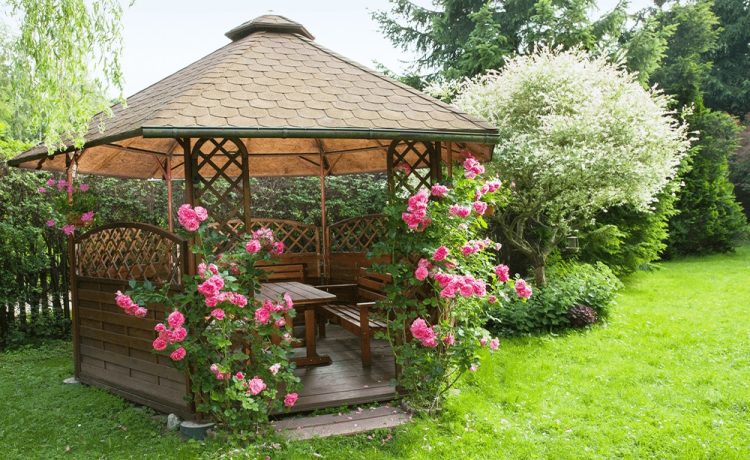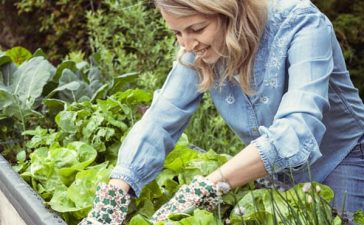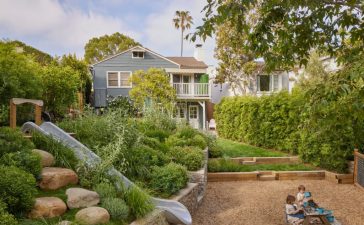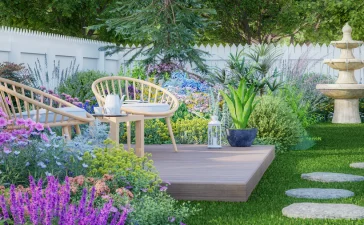The world of gardening and outdoor design is vast, offering a plethora of choices that cater to different aesthetic preferences, environmental concerns, and maintenance abilities. Among the most debated topics is the distinction between traditional landscaping and organic gardening. Both approaches have their merits, yet they differ significantly in their philosophy, methods, and long-term effects on the environment. While traditional landscaping often emphasizes aesthetics and control, organic gardening places a greater emphasis on sustainability and harmony with nature. So, which approach works best for your outdoor space? In this article, we will explore the advantages and challenges of both, helping you make an informed decision on how to create the garden of your dreams.
Traditional Landscaping: Aesthetic Control and Design Precision
Landscaping, in its traditional sense, is often seen as the art of creating visually appealing outdoor environments through the careful selection of plants, hardscapes, and other elements. It combines elements of architecture, horticulture, and design to sculpt the land into a polished, well-maintained space. Whether it’s a formal garden with neatly trimmed hedges or a sprawling lawn bordered by flower beds, landscaping is about crafting a specific look that reflects personal style or enhances the exterior of a home.
Aesthetic Appeal and Versatility
One of the primary advantages of traditional landscaping is its ability to create a controlled, meticulously designed environment. Landscapers can introduce an array of decorative features such as fountains, stone pathways, and topiary, all tailored to create a cohesive and polished look. Whether you favor the sleek lines of a modern garden or the romanticism of a cottage-style landscape, landscaping provides the tools to bring your vision to life. Furthermore, it allows for a high degree of versatility. From formal gardens to tropical retreats, landscaping offers a broad spectrum of design possibilities, making it suitable for various tastes and architectural styles.
Use of Non-Native Plants and Maintenance
However, traditional landscaping often relies on non-native plants, which may require additional care to thrive in their new environment. Many of these plants are selected for their aesthetic qualities rather than their ecological suitability, leading to potential problems such as water overuse, poor soil health, or susceptibility to pests. Moreover, maintaining a well-manicured landscape often demands significant time and resources. Regular trimming, fertilizing, and the application of pesticides and herbicides can be necessary to keep the landscape looking pristine. This not only increases maintenance costs but also raises concerns about environmental impact, as synthetic chemicals can harm surrounding ecosystems.
Environmental Impact
Another drawback of traditional landscaping is its environmental footprint. Lawns, for example, are water-intensive and require constant upkeep. Fertilizers and pesticides, which are frequently used in landscaping, can pollute nearby water sources, harm pollinators, and contribute to soil degradation. The preference for neat, uniform spaces often disregards the natural biodiversity that a more organic approach would nurture.
Organic Gardening: Sustainability and Natural Harmony
In contrast, organic gardening focuses on creating sustainable, self-sufficient ecosystems that work in harmony with nature. This approach avoids synthetic chemicals and emphasizes natural methods for pest control, soil improvement, and plant care. By using organic fertilizers, composting, mulching, and rotating crops, organic gardeners foster soil health and promote biodiversity. The overarching goal is to create a healthy, resilient garden that minimizes its environmental impact.
Soil Health and Sustainability
One of the primary benefits of organic gardening is its focus on soil health. Organic gardeners view the soil as a living entity, teeming with beneficial microorganisms, fungi, and earthworms that contribute to plant growth. By avoiding synthetic fertilizers and pesticides, organic gardening encourages the natural processes that enrich the soil, such as nitrogen fixation by legumes and composting. This results in healthier plants that are less dependent on external inputs. Over time, organic gardening builds up the soil’s organic matter, improving its structure, water retention, and nutrient-holding capacity.
Biodiversity and Eco-Friendly Practices
Organic gardening promotes biodiversity by incorporating a variety of plants that attract beneficial insects and pollinators, such as bees and butterflies. Rather than monocultures or heavily curated flower beds, organic gardens often feature a diverse range of species that coexist symbiotically. These gardens may include native plants, which are better suited to the local climate and ecosystem, providing habitat and food sources for local wildlife.
Moreover, organic gardening practices often involve the use of rainwater harvesting, crop rotation, and companion planting, all of which reduce the need for external resources. By growing food and ornamental plants side by side, organic gardeners can reduce their carbon footprint and minimize the use of synthetic chemicals in the environment. This not only benefits the garden but also contributes to broader environmental sustainability.
Challenges and Limitations
Despite its many advantages, organic gardening does present some challenges. For one, it can require more patience and a deeper understanding of ecological principles than traditional landscaping. The results of organic gardening, such as healthy soil and pest-resistant plants, are often seen over time rather than immediately. Additionally, organic gardens may not have the same degree of instant visual appeal as a traditional landscaped garden. While organic methods foster a sense of natural beauty, they may not provide the symmetrical, perfectly groomed appearance that some people prefer.
Moreover, organic gardening can sometimes struggle against pests and diseases without the use of chemical interventions. Organic gardeners rely on natural predators or barrier methods like row covers, which may not always be as effective as synthetic pesticides. This means that, while organic methods are more environmentally friendly, they can require more vigilant care and monitoring to ensure a garden remains healthy.
Which Approach Works Best for You?
The choice between landscaping and organic gardening ultimately depends on your goals, preferences, and the specific needs of your outdoor space. If you prioritize aesthetic control, a neatly trimmed lawn, and carefully curated design features, traditional landscaping may be the better option. It offers instant gratification, allowing you to transform your outdoor space into a polished and visually appealing environment. However, it’s important to be mindful of the long-term environmental impact and maintenance costs that come with this approach.
On the other hand, if sustainability, soil health, and biodiversity are your top priorities, organic gardening may be the right choice. It’s a more holistic and eco-friendly approach that can lead to a healthier, more resilient garden over time. While it may take longer to see the results and may require more ongoing care, the benefits of organic gardening are substantial, both for your garden and for the planet.
Ultimately, many homeowners find that a blend of both approaches works best. Incorporating elements of organic gardening, such as composting and using native plants, within a well-designed landscaped framework can create a balanced outdoor space that’s both beautiful and environmentally responsible. Whether you lean more towards traditional landscaping or embrace the principles of organic gardening, the key is to make choices that align with your values, your space, and your vision for the future of your garden.









